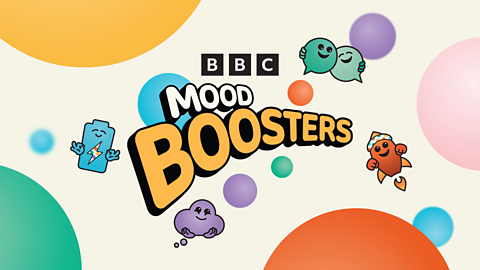Hi, I’m Bethany and it’s time to recharge by giving our body a rest, so we can feel calm and strong.
So let’s start by taking some big deep breaths. Just like this.
Breathing in, two, three and breathing out, two, three.
In two, three. And out two, three.
You keep going.
There might be times when something that we are not expecting throws us off balance.
This can make us feel a bit wobbly.
When that happens, we just need to take some time and focus on the things that we know we can rely on.
I am going to call these things our anchors.
Do you feel a little calmer already?
I know I do!
Right, keep your feet firmly stuck on the ground. I like to wiggle my toes for this.
Now try and think of something that makes you happy, calm and balanced.
This is a nice thought. Something that makes you smile and feel happy.
My nice thought is having a nice cuddle from mum.
What's yours?
Have you got one?
Good.
Now focus your mind and think about this thought for a few seconds.
Don’t forget to keep breathing steadily in and out.
Well done!
Now I want to see if you can test your balance by standing on your tiptoes.
Like this. Or even on one leg, if you really want to challenge yourself.
But, as soon as you feel yourself wobbling a little bit, like me, take a deep breath and really think about your happy thought.
This happy thought is your ‘anchor’.
Okay.
Did you notice you got a little less wobbly?
Don’t worry if you didn’t.
It can take a little practice.
Even if it made you smile a little, that's great too!
If you want to challenge your balance even more, rest one foot behind the other leg’s knee and reach up to the sky.
Like this.
Let’s take a deep breath and try one more time. Remember to think of your anchor.
You've got this guys!
Amazing, that was great!
I now feel so much calmer than before.
Do you?
It’s ok to feel wobbly at times. Things can happen when we least expect them, but thinking about our anchor or who makes us happy can really help us to feel more balanced again.
I feel really proud of us for taking time to recharge today! How do you feel?
Can you say with me “I feel rested and balanced”?
Ready?
“I feel rested and balanced.”
I hope to see you again soon.
Bye.
Olympic gold medallist Bethany Shriever guides pupils in this activity using visualisation techniques to stay steady and experiment with how changing thoughts can affect our balance, both mentally and physically.
By thinking of something or someone that makes them happy, referred to as their anchor, and incorporating balancing movements such as stretching, pupils are reminded that it is normal to feel wobbly at times.
This activity aims to remind pupils that they can always change their emotional states to become more rested and balanced when they need to.
Rest is the break our bodies and minds need to grow strong and flourish.
Teacher Notes
Phase and setting most suitable for: KS1 and KS2. Whole class movement.
When to use: Before or afterbreak times to regulate.See our Moodboosters School Timetable for more ideas.
Curriculum/topic/SEMH links: Worries, nerves and stress. Emotional regulation. PE - Balance
Teachers can use this activity to encourage pupils to make and strengthen connections with others to provide greater stability and safety in their lives. This can help them to deal with change when it occurs and recognise when it is necessary, temporary or more permanent.
Visit the Teacher Guide for more information and support.
Enrichment activities
- Anchor Thought Sharing Circle
Prompt: “What is your anchor thought? Something that makes you feel happy, calm, and balanced.”
Take turns around the group. Children can say:“My anchor is _______.Examples: hugging my teddy, playing with my cat, being with my grandma, reading a book.
Reflect after sharing: “Did thinking about your anchor make you feel more settled?”
- Balance Challenge Game
- Instructions:
- Stand on two feet and wiggle toes.
- Balance on tiptoes while thinking of your anchor.
- Balance on one foot.
- Try tree pose (one foot resting on the other leg’s knee, reaching up).
- Before and during each pose, say:“I am calm.”“I feel steady.”“I am balanced.”

More from Recharge:
Power Off. video
Dr Ranj Singh slows things down and gets pupils to be present and recognise when they're tense to help them feel calmer and more focused.
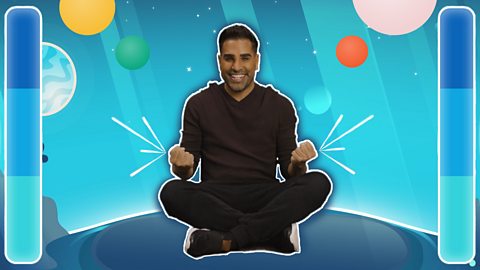
A Moment in Nature. video
TV Presenter Rhys Stephenson encourages primary school pupils to employ all of their senses to enable them to deal with the day ahead.
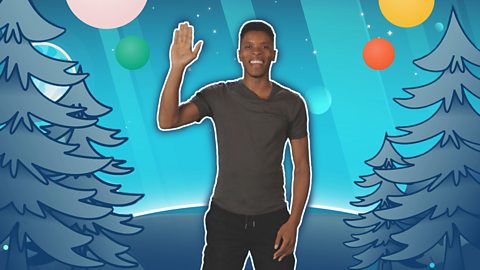
Take It Slow. video
Strictly Come Dancing’s Amy Dowden mimics a sloth and combines imagination and yoga-inspired poses to help children relax.
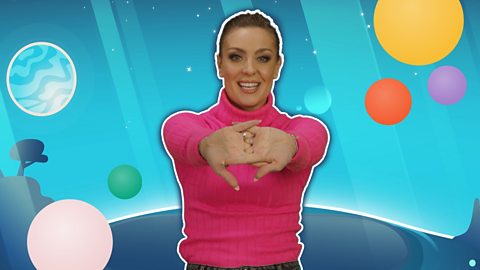
Breathe and Be. video
TV presenter and Strictly Come Dancing champion Oti Mabuse inspires pupils to explore breathwork and movement in this classroom activity.
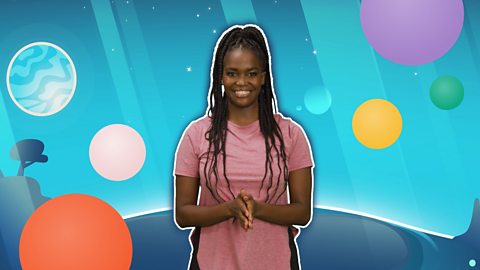
Jungle Stretch. video
CBeebies presenter Evie Pickerill uses slow, still and dynamic movements to encourage flexibility and mindfulness in children.
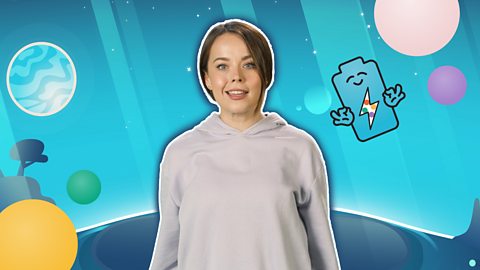
Self-Belief Warriors. video
Dr Ranj Singh leads pupils through a series of strong and empowering poses, helping to create positive mindsets and develop feelings of self-worth.
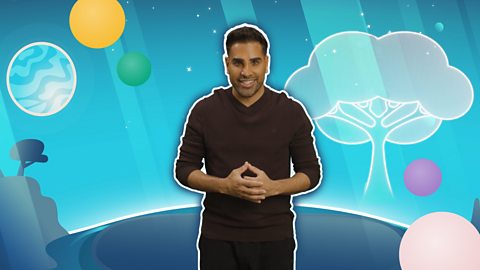
LOL Time. video
CBBC presenters Rhys Stephenson and Joe Tasker lead this fun activity that encourages children to work in pairs and make their partner laugh.

Meditation Station - Feeling Thankful. video
Ade Adepitan introduces techniques to teach children how to control their breathing to regulate feelings and emotions.
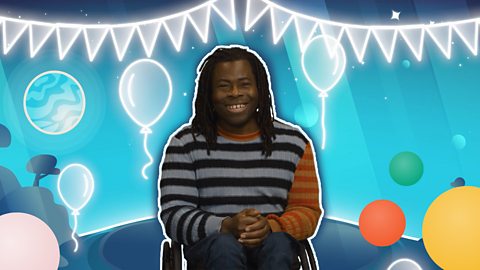
Pirouette to Peace. video
Evie Pickerill and Oti Mabuse teach some basic ballet moves that encourage primary school children to slow down, pause and take a break.
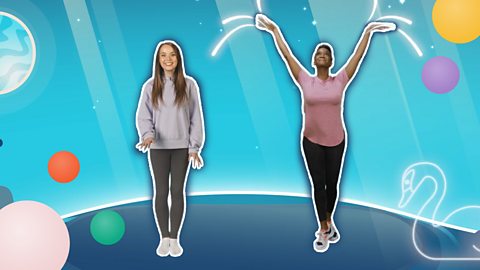

More from Moodboosters:
Boost. collection
Energetic, movement-based activities promoting self-confidence in children by encouraging them to use movement and positive thinking to build self-esteem.

Connect. collection
Fun, movement-based activities for children centring on relationships and how to recognise emotions in others through empathy.

Imagine. collection
Learning activities to promote creativity and optimism in children whilst encouraging them to use their imagination to envision their goals and aspirations.

Teacher's guide
Curriculum-linked ideas and tips about how you can use Moodboosters with your class during the school day.
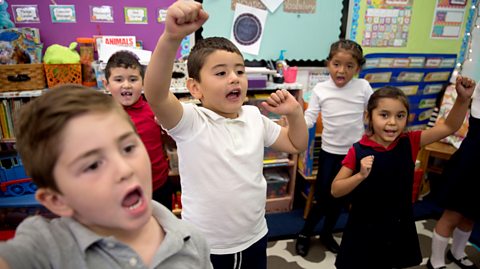
Watch again - our live launch. video
Watch highlights as children from around the nations join together for a big mood-boosting moment.
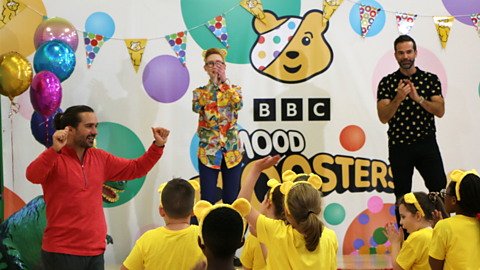
About Moodboosters
Everything you need to know about our initiative to get KS1 / KS2 pupils moving for mental health and wellbeing.
